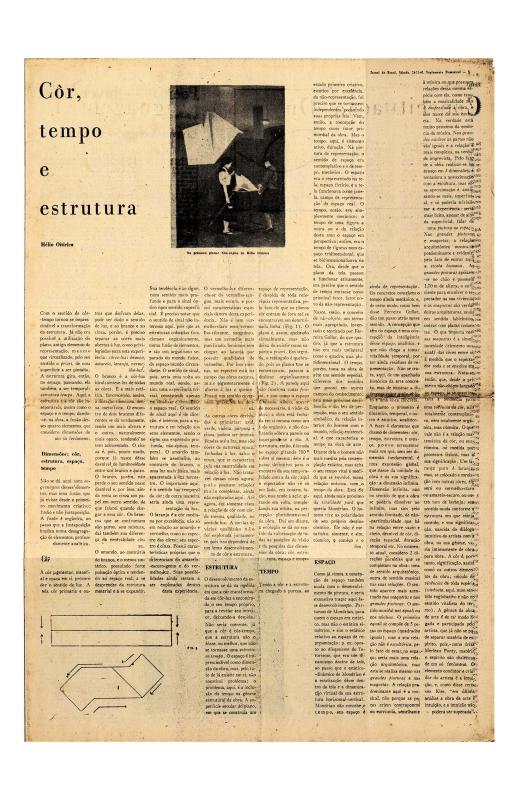In this article, Hélio Oiticica refers to certain ideas he had expressed in other essays written in the late 1950s and early 1960s, and reviews his involvement in the Brazilian constructive movement. He discusses his major works and some of his ideas concerning constructive art. Beginning in 1954—when he was a member of the Grupo Frente led by Ivan Serpa—writing about what he was doing became an integral part of his creative process. Oiticica did not sign the Manifesto Neoconcreto in 1959, but the following year he took part in the Segunda Exposição Neoconcreta, and became one of its main spokesmen in the areas of the theoretical and practical expressions of the constructive avant-garde.
Hélio Oiticica (1937–80) was a Brazilian Neo-Concrete artist. He started studying painting with Ivan Serpa in 1954 at the Museu de Arte Moderna do Rio de Janeiro. He later joined the Grupo Frente and the Neo-Concrete movement. In addition to his geometric paintings, which he worked on while he was studying with Serpa and was a member of the Grupo Frente, Oiticica produced performance and participatory art. His Parangolés (1964)—capes made with fabrics and recycled materials—were worn by the Mangueira Samba School during their performances. Oiticica also created immersive spaces, such as Nucleus (1959–60), which was an installation constructed from suspended painted wooden slats inspired by the Constructivism of Piet Mondrian. In 1967 Oiticica created the immersive environment Tropicália at the Museum of Modern Art in Rio de Janeiro. Tropicália was an installation consisting of rooms with plants and materials such as water, sand and stones, a parrot, a television set, and various other elements that were representative of Brazilian popular culture. The environment was designed to promote sensory stimulation. Oiticica applied the same principles to Eden, the installation he created in 1969 at the Whitechapel Gallery in London. The name Tropicália was used by Brazilian musicians to describe a new style that combined international music and pop with traditional Brazilian music. The term “Tropicália” was absorbed into popular Brazilian culture and came to signify a uniquely Brazilian essence. In 1970 Oiticica took part in the group exhibition Information at the Museum of Modern Art in New York.
For more examples of Oiticica’s thoughts on Brazilian art in the late 1960s and early 1970s, see the essay “Esquema geral da nova objetividade” [doc. no. 1110372], the article “Aparecimento do suprasensorial na arte brasileira” [doc. no. 1110620], and the complementary text on his theory of color “Cor, tempo e estrutura” [doc. no. 1110353].



